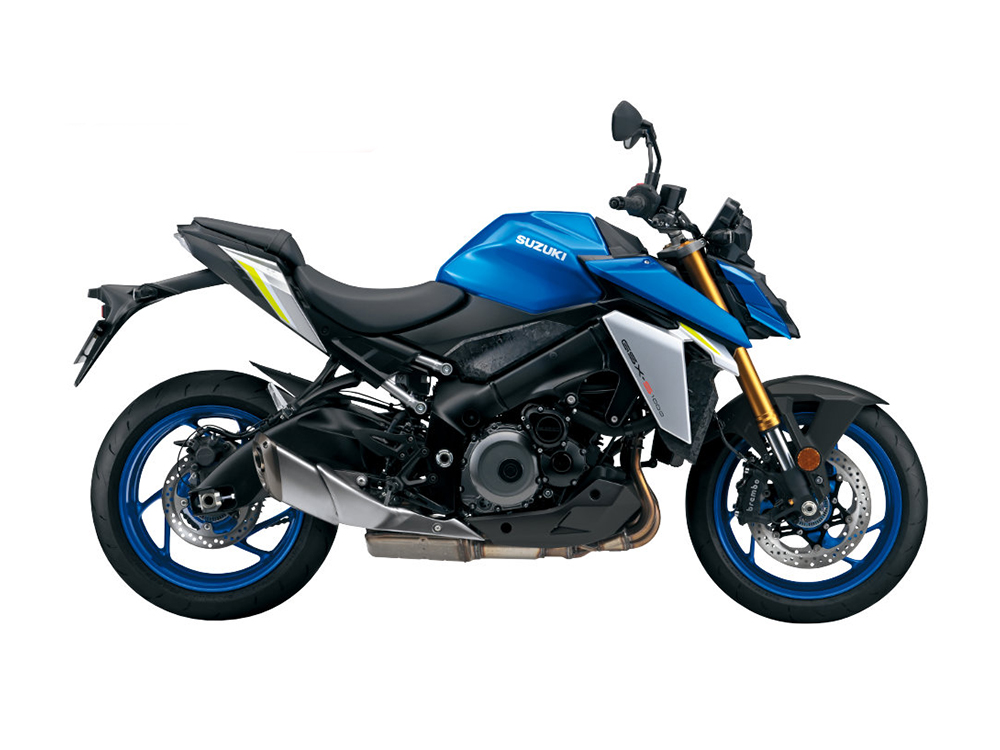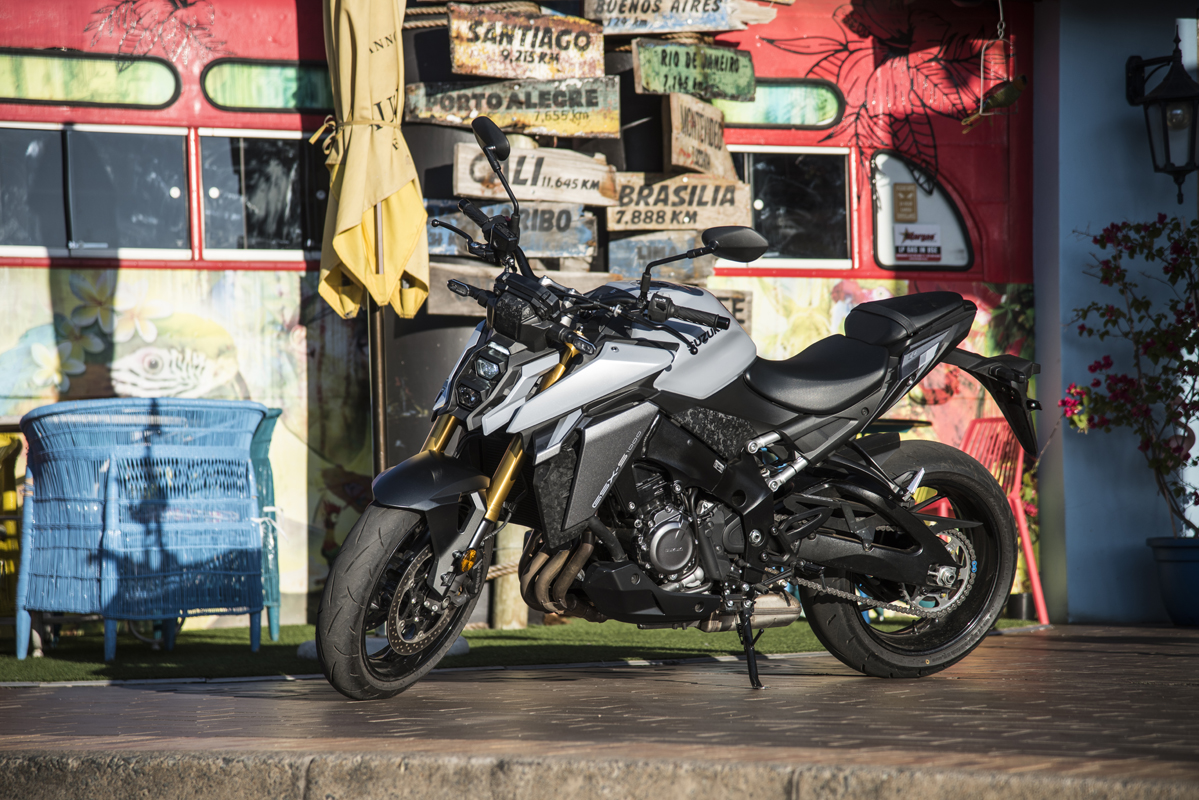
One thing that has always interested me, is how motorcycle manufacturers somehow find new ways to continuously shift their focus from one motorcycle segment to the next. I used to think it was subjected to the economy, or otherwise chasing numbers, but nowadays I think it has to do with whichever class is most popular—when a specific manufacturer strikes gold, the rest seem to follow. This is both a positive and a negative, as some classes we love get less attention and are often forgotten about completely, while other segments draw all the attention.
What’s hot on the plate this year is the middle-weight naked and adventure motorcycles, with almost every single manufacturer wanting a piece of the pie. While I can’t but agree with how sensible, attainable and attractive this class is, you can’t forget about segments that really move the soul. I’m talking about supernakeds, the 1000cc and above beasts that can take a resting 60 BPM heart rate to 160 in a matter of milliseconds. These naked missiles offer superbike equivalent performance with the added benefit of comfort and everyday road civility.
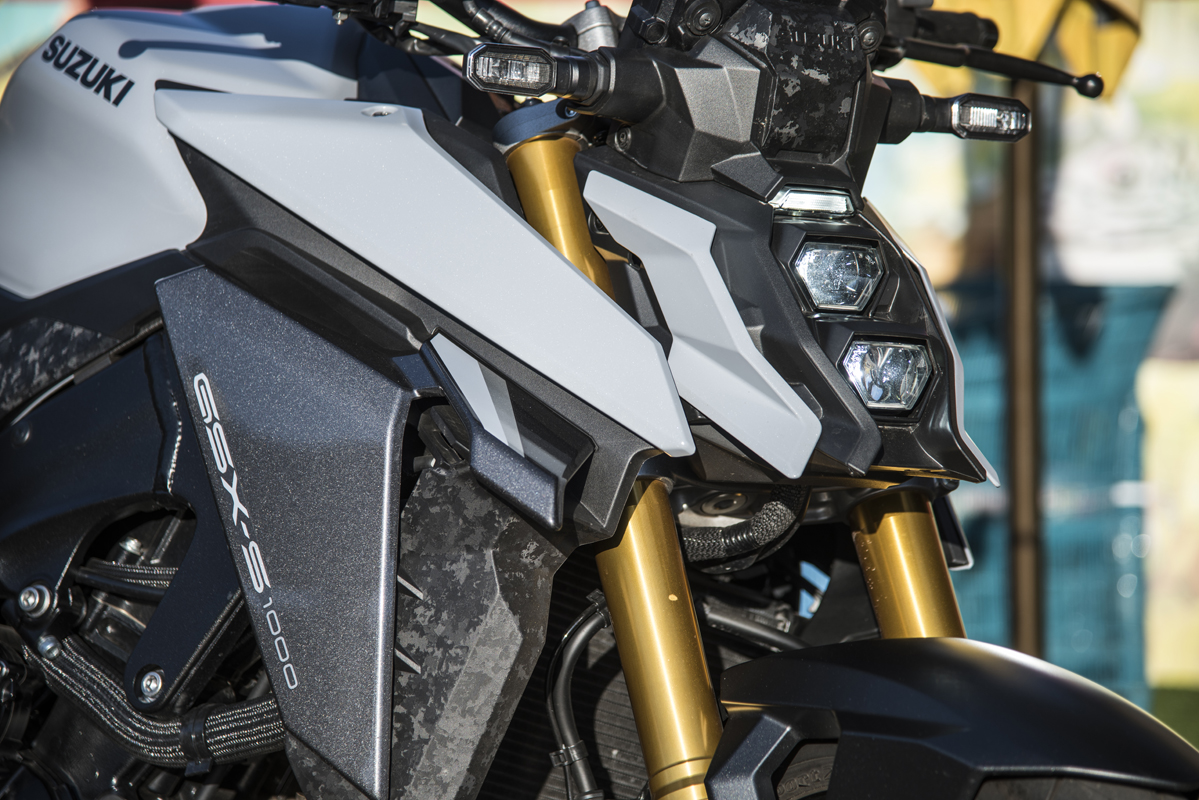
Whilst the Europeans continue to develop and take their supernake bikes to infinity, most of the Japanese manufacturers are either focusing on the middle-weight segment or in some countries like South Africa, they just don’t get brought in because of some or other reason. So, it was a surprise to me to find out that our long-term Suzuki GSX-S1000 is the only true Japanese supernaked currently brought into the country.
I know engineers and marketing companies have convinced a bunch of us that parallel twins are indeed the way to go forward for both inner-city versatility and outer. Whilst this holds some truth, I think inline fours do much of the same and possibly in a better way. Let me explain! With Suzuki’s GSX-S 1000 were looking at 150 hp @ 11000 rpm and 108 Nm of torque @ 9500 rpm, with which 70% is available from 3,000 rpm. This means you’ve got a manageable yet torque-strong bike in the low rpms when doing slow city riding and a top-end hit that happens in the most linear of fashions.
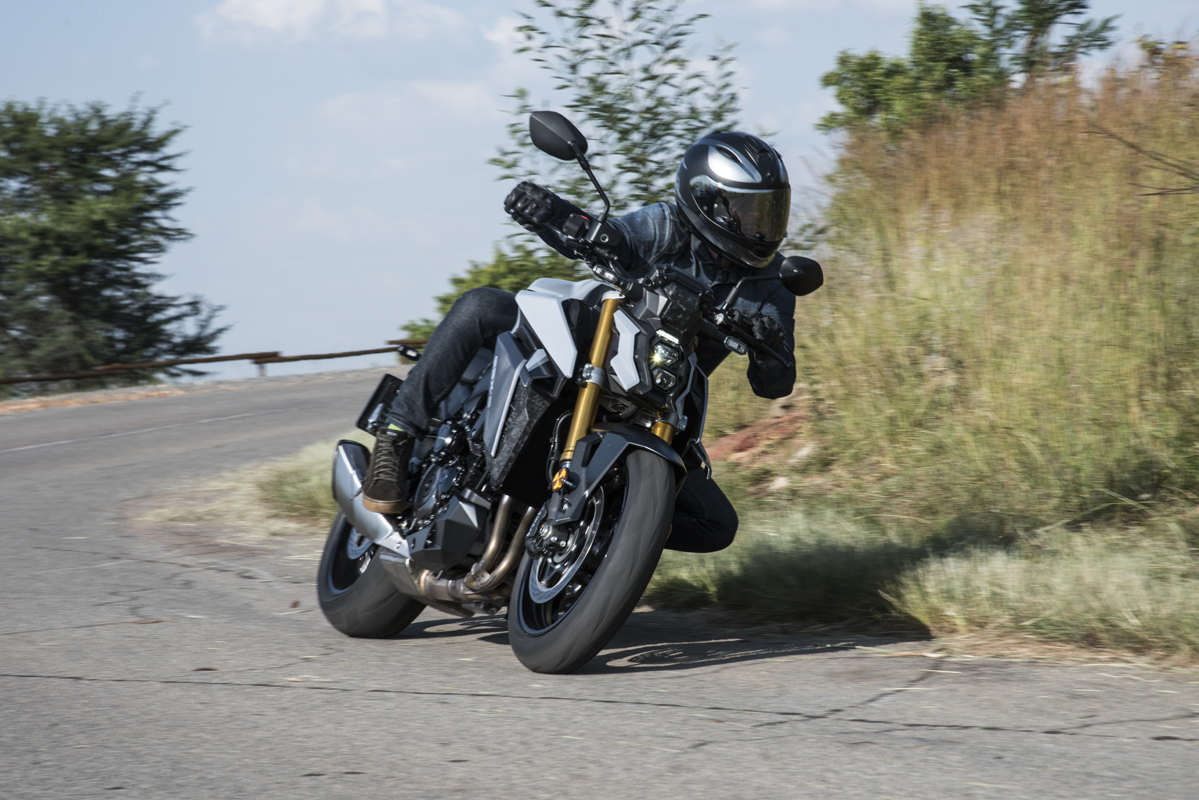
An inline four has always been the easier way to go fast on a track and this translates into much of the same with the Gixxer on the road. Its power curve allows the rider to ride spiritedly without any surprises from the motor or chassis. I find myself short shifting through the smooth gearbox at around 5000 rpm in town which allows for a 19 km/L fuel economy. It’s crazy to think that you could commute on a supernaked, but when you’ve got an inline four which is in a seriously under-stress environment sometimes more is better.
The word supernaked has a stigma attached to it, people miss understand them for all out hooligan machines, but after several thousand km spent riding the GSX-S, the same cannot be said, at least not entirely. The words smooth and plush come to mind when riding the Suzuki and this is thanks to the well-damped KYB suspension, progressive Brembo callipers brake feel, smooth up and down quick shifter, comfy rider triangle and docile throttle response.
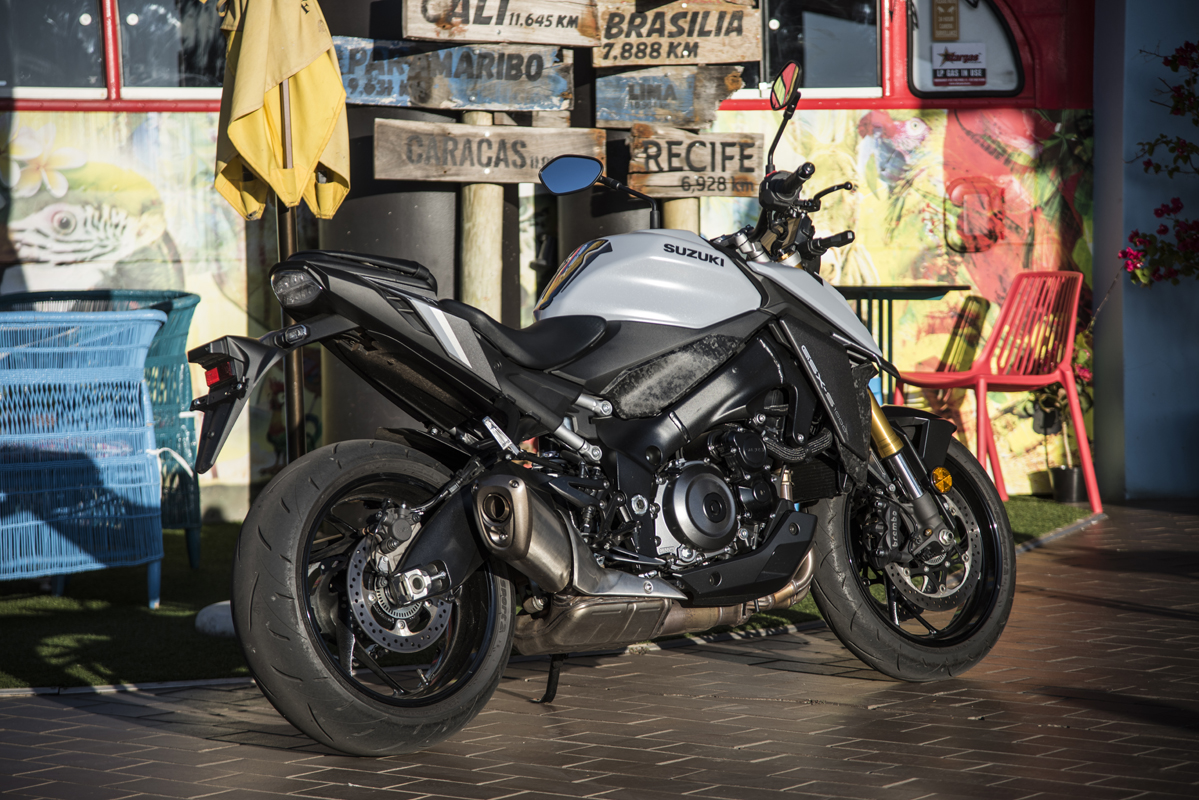
As mentioned much earlier in the article, there’s not much that performance-minded enthusiasts can compare Suzuki’s inline four to, besides BMW’s S 1000 R. BMW’s S 1000 RR and S 1000 R set the benchmark in the horsepower vs electronics performance era and they have recently taken a jab at it again with their “M” models. Whilst not being the most exciting in their class they have been notoriously known for being, good “do-it-all” road bikes and damn fast in anyone’s hands. Why am I bringing BMW into all of this? Well, I think the GSX-S shares a similar recipe and on the spec sheet —Suzuki is not far off of the ‘S’.
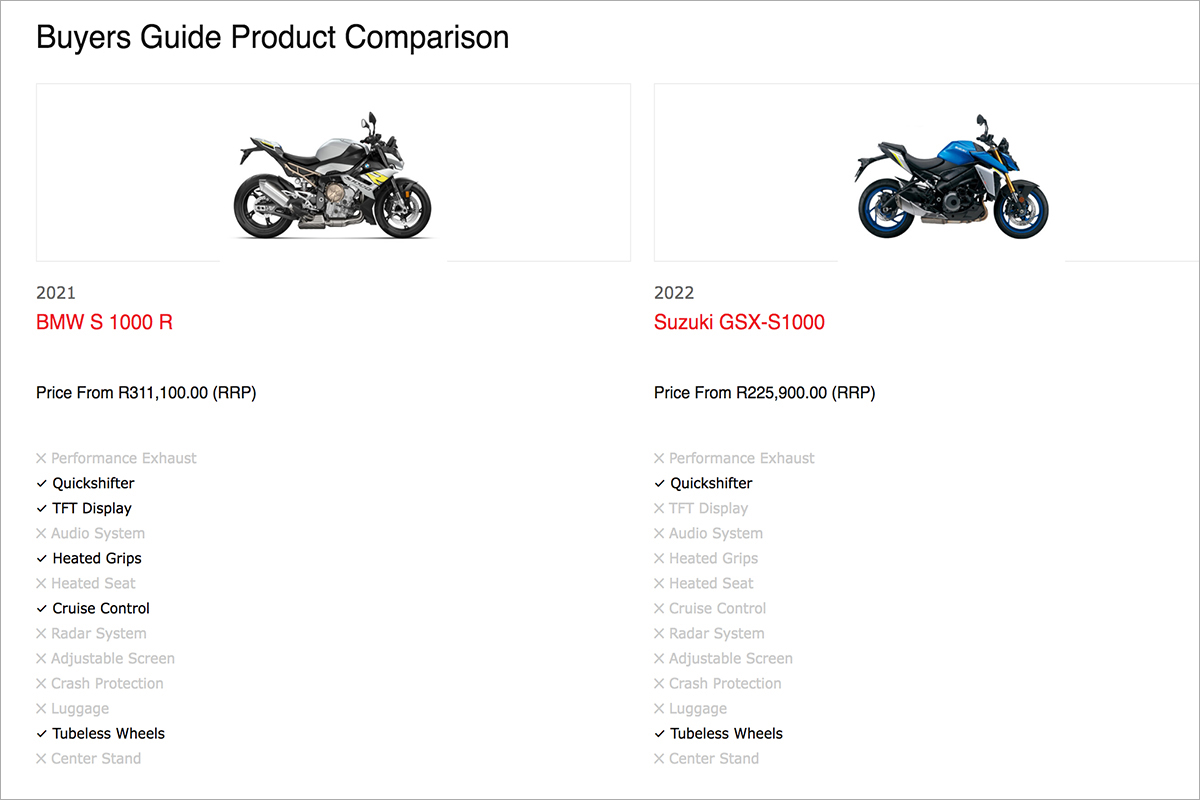
The numbers really shocked us with the GSX-S only down 9 Kw (15 hp) and 8 Nm at exactly the same peak rpm range as the BMW. The Suzuki however carries slightly more fuel with its 19 L fuel tank and has more impressive stopping power with its Brembo front Callipers compared to BMW’s OEM spec brakes. Feature-wise the BMW takes the cake, but if you can live without cruise control, and a TFT display (you can fit heated grips) then I think the GSX-S1000 is a bargain at 85k less.
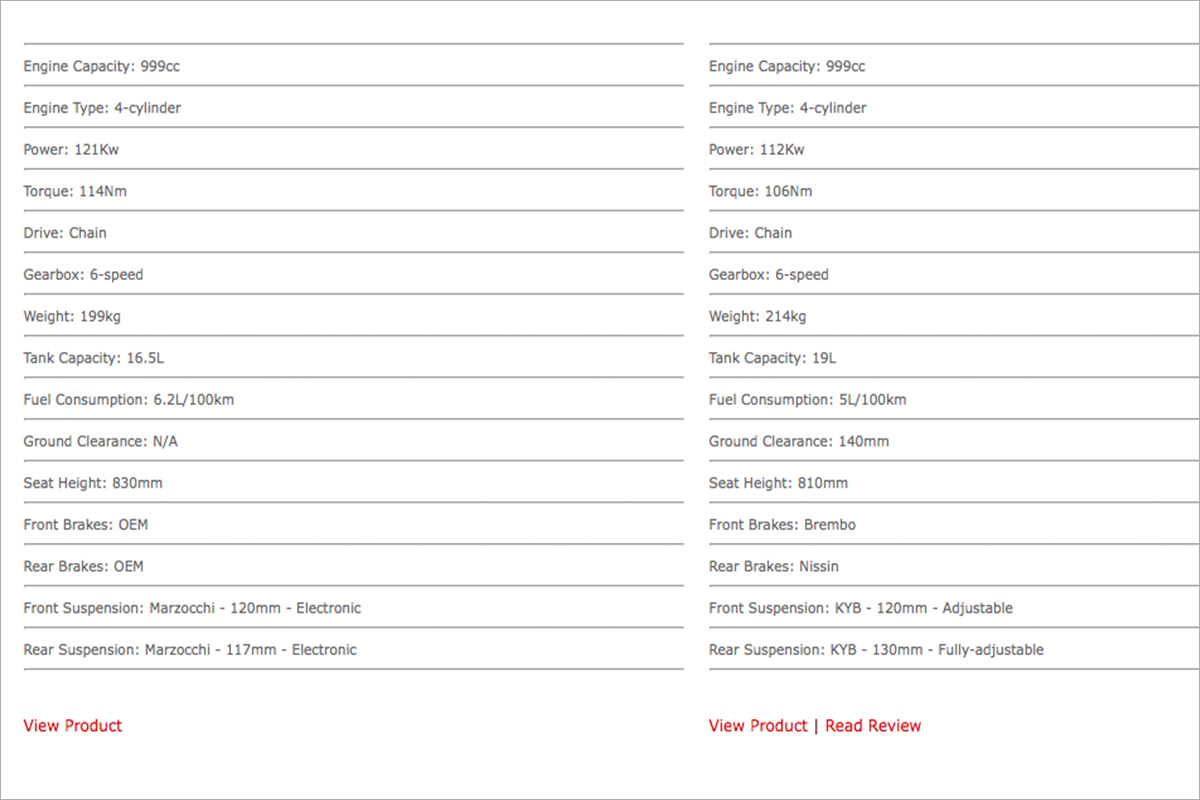
Talking about bargains, if you are looking for a top-tier supernaked in 2023 you need to spend mid to high 300s and for an exciting middleweight you’re looking at low to high 200s. The GSX-S slides in at the low end of the supernaked class for middle-weight naked money. If you like how it looks and if owning a Japanese supernaked is on your bucket list, then you should take a closer look at the Suzuki GSX-S1000.
Suzuki GSX-S1000
For more information on the bike featured in this article, click on the link below…




